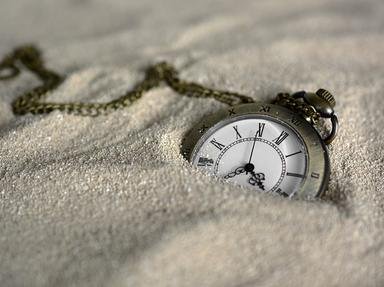Quiz Answer Key and Fun Facts
1. Americans celebrate February 22nd as George Washington's birthday, though he was actually born on February 11th. What explains this apparent discrepancy?
2. The starting year in the Islamic calendar is based upon which event?
3. What unusual feature characterizes the calendar used in Ethiopia?
4. You've undoubtedly heard of the Ides of March and probably know it's the 15th of March. What was the first day of the month for the Roman calendar called?
5. The Gregorian Calendar was first issued in 1582. When did England adopt it?
6. A recent end-of-the-world panic was predicted for December 21, 2012, based on the expiration of a cycle in which calendar?
7. What is the length of the Islamic calendar year in days?
8. Currently it's year 2021 by the Gregorian calendar, but it's a different year on some other calendar systems. Which of these calendars systems has the largest year number at this date?
9. The Hebrew calendar is a lunisolar calendar, in which months follow the same lunar cycle. A year normally consists of 12 lunar months of approximately 354 days. To keep the calendar in sync with the solar year, leap months are periodically added (7 leap months in a 19-year Metonic cycle). Where are the leap months inserted in the Hebrew calendar?
10. The concept of weeks or subdivision of the month varies between different calendar systems or may not exist at all. Which calendar divided the month into three ten-day weeks?
Source: Author
SixShutouts66
This quiz was reviewed by FunTrivia editor
trident before going online.
Any errors found in FunTrivia content are routinely corrected through our feedback system.
